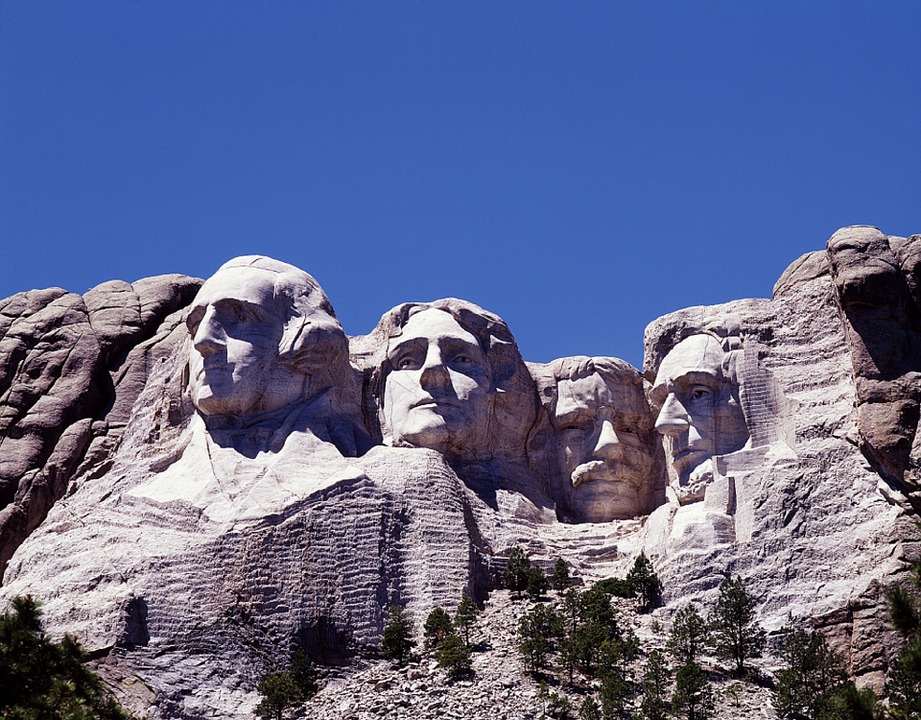Inferno Essay Topics to Avoid the Nine Circles of Academic Hell
“The Divine Comedy” is one of the most famous poems by Italian poet Dante Alighieri. In one of the parts of the poem, Dante skillfully describes Hell (or Inferno). Dante’s Hell differs from those we used to imagine. It’s a very structured system that consists of nine circles that refer to a particular number of sins and punishments.
If you were assigned to read this poem, don’t hesitate! It’s a masterpiece that is worth your time and effort.
In this article, you can find a suggestion that may help you get started thinking about the topics to discuss and writing the research paper. At the same time, you can use any of the listed Inferno essay topics unchanged.
Compare and Contrast “Inferno” Essay Topics
- Compare and contrast Machiavelli’s “The Prince” and Dante’s “Inferno.” Discuss Machiavelli’s work in the context of Dante’s worldview.
- Compare and contrast Chaucer’s “Troilus and Criseyde” and Dante’s “Inferno.”
- Compare and contrast two characters from Dante’s “Inferno” and Austen’s “Pride and Prejudice.”
- Compare and contrast two characters from Dante’s “Inferno” and Shakespeare’s “Henry IV.”
- Compare and contrast two different characters from different cantos.
- Compare and contrast the anime “Seven Deadly Sins” and Dante’s “Inferno.”
- Compare and contrast modern social values and those depicted in the heroes of “Inferno.”
- Compare and contrast the images of women in “Inferno,” “The Book of the City of Ladies,” and “The Decameron.”
- Compare and contrast the views on spiritual worlds of Dante in “Inferno” and the views of Catherine of Siena.
- Compare and contrast “Inferno” and Boccaccio’s “Decameron.”
- Compare and contrast the theme of journey in Dante’s “Inferno” and Homer’s “Odyssey.”
- Compare the main themes in “Inferno,” “Hamlet,” “Heart of Darkness,” and “Waste Land.”
- Compare and contrast Dante’s “Inferno” and Shakespeare’s “King Lear” regarding the nature of human suffering.
- Compare and contrast “Inferno” and “Heart of Darkness” in the context of sympathizing with souls in Hell.
- Compare and contrast Dante’s poem “Inferno” and Fiona Hall’s artworks on the same poem.
- Compare and contrast Athena in “Odyssey” and Virgil in “Inferno.”
- Compare and contrast Dante’s “Inferno” and Disney’s movie “A Christmas Carol.”
- Compare and contrast the morals of the stories “Wife of Bath,” “Don Quixote,” and “Inferno.”
- Compare and contrast Dante’s circles of hell in “Inferno” and moral purification portrayed in “The Table of Cebes.”
- Compare and contrast the image of Beatrice from “Inferno” and female characters from “Epic of Gilgamesh,” Genesis, and “The Odyssey.”
- Compare and contrast “Inferno” and The Gospel of Mark, “City of God,” or “On Christian Liberty” from the perspective of virtue.
- Compare and contrast the nature of sins in upper and lower Hell.
- Compare and contrast themes in Homer’s “Iliad” and Date’s “Inferno.”
- Compare and contrast “Inferno IX” and “Purgatory IX.”
Analytical Dante’s “Inferno” Topics
- Analyze characteristics related to Fraud. Why does Dante depict it as an immoral way of being?
- Analyze the Neutrals and explain why they are not allowed to join the City of Hell. What qualities prevent them from being citizens?
- Analyze female characters in Dante’s “Inferno.” What position do women have in the story?
- Analyze the poem “Inferno” in the context of “The Aeneid” and Augustine’s “Confessions.”
- Analyze one of the characters who refers to one of the sins.
- Analyze Dante’s “Inferno” within the category of admonition.
- Analyze “Inferno” in the context of unity and order.
- Analyze Richard of Tart’s “The Secret History” in the context of Dante’s “Inferno.”
- Analyze the roles of women in “Inferno” and “One Thousand and One Nights.” How do Beatrice and Shahrazad reflect how each culture sees women?
- Analyze the punishments in “Inferno” and whether they fit each sin or crime. Which sin or sins seem to be in the wrong place?
- Analyze the characters from “The Song of Roland” in the context of Dante’s “Inferno.”
- Analyze Gustave Dore’s illustrations of Dante’s “Inferno” and the interpretation of the original text.
- Analyze “Inferno” in the context of virtue. Can people truly be virtuous according to Dante? What are the limitations of virtue?
- Analyze the sins women usually commit in Dante’s “Inferno.” Which circle of Hell contains more women? How does Dante react to women?
- Analyze how Dante characterizes his characters to unleash his talents, art, life, and mission.
- Analyze the representation of Lucifer in “Inferno.”
- Analyze the relation of “Aeneid” and Augustine’s “Confessions” to Dante’s poem.
- Analyze Gustave Dore’s illustrations to Dante’s “Inferno.”
- Analyze the story of Francesca and Paolo. Explore Dante’s reaction in the story.
- Analyze the punishment for suicide and Dante’s conception of Contrapasso.
- Analyze the symbols of sin and righteousness in “Inferno.”
- Explore the challenges of being a son in “Hamlet” and “Inferno.” Analyze the relationships between Hamlet and Claudius, and Dante and Virgil.
“Inferno” Paper Topics on Religion
- Analyze “Inferno” from the Christian doctrine perspective.
- Examine the role of religion in “Inferno.” What biblical connections are referred to in the text?
- Analyze Dante’s “Inferno” in the context of the Bible and “Summa Theologica.”
- Does Dante depict God as something cruel in “Inferno”?
- How does Dante present Islam in “Inferno”? Compare the author’s views of sinners among Muslims, Christians, and pagans.
- Explain why Dante has chosen Virgil (a pagan) to be the guide through a Christian Hell.
- Analyze the symbolism of Satan and the meaning of its appearance in “Inferno.”
- Explain how Dante depicts both Christian and Medieval Christendom heritages in “Inferno.”
- Explain how the culture is represented in “Inferno” through religious and philosophical ideas.
Explanatory Dante’s “Inferno” Paper Topics
- Explain the symbolism of darkness in “Inferno” from the perspective of three different cantos.
- Explain Dante’s term of Contrapasso. How does he employ it in “Inferno”?
- Explain whether Dante’s and Virgil’s relationship changes over the course of the journey.
- Explain how personal flaws enrich the depiction of characters in Dante’s “Inferno.”
- Explain the difference between the circle of Fraud and other circles in relation to punishments.
- Explain how Dante confesses his own sins and weaknesses in the narration of the journey through Hell.
- Explain the meaning of Virgil’s presence in Dante’s journey through Hell
- Explain how the author portrays politics, economics, and culture of the Middle Ages in “Inferno.”
- Explain modern apathy in the context of Dante’s “Inferno.”
- Explain the nature of punishment in Dante’s “Inferno.”
- Explain whether Dante is guilty or not guilty of graft in “Inferno.”
- Explain Dante’s vision of Hell in the historical context and the time he lived in.
- Explain Dante’s attitude toward emotions. Analyze how he approaches such emotions like pity, shame, fear, and anger in “Inferno.”
- Explain why Dante depicts the nature of sins and punishments as appropriate.
Dante’s “Inferno” Research Essay Topics for Discussion
- Discuss the theme of incontinence in “Inferno” and how this quality affects society as well.
- Discuss the theme of death and the afterlife in Dante’s “Inferno” and the painting “The Last Judgment” by Michelangelo.
- Describe students’ academic dishonesty in regards to Dante’s “Inferno.” What punishment do students deserve? What type of sin is it?
- Describe “Inferno” within terms of justice and mercy.
- Choose one of your favorite circles of Hell in Dante’s “Inferno” and prove your choice.
- Describe the role of violence in “Inferno.” What scenes are the most significant?
- Imagine that you want to visit Hell. How will you get there? What will you see? What sin will be suitable for you? How will you end up in your journey?
- Explore how the culture and the time period influenced the creation of “Inferno.”
- Define whether Dante has changed after he left Inferno. Compare his state from the beginning to the end.
- What is the original context and audience of “Inferno”? Explain the purpose for the audience.
- How has Dante’s personal life and feelings toward Beatrice influenced the characters of “Inferno”?
- Explore the most memorable characters (Paola, Francesca, Ulysses, etc.) in “Inferno” with respect to personality and microscopic tragedies.
- Define the meaning of Capaneus in understanding the psychology of sinners in “Inferno.”
- What can we learn about the cultural values of medieval Italy from the levels of Hell in “Inferno”?
- Describe the symbolic function of landscapes in “Inferno” and what it says about Dante’s convictions about sin.
- What stylistic elements does Dante use in “Inferno”?
- Explore the speeches of the main characters and how they characterize them.
Persuasive Dante’s “Inferno” Writing Topics
- What does Dante try to express in the epic poem “Inferno”? Prove your point of view.
- Why has Dante written “Inferno”? What historical figures appear in the poem?
- What has Dante discovered about his own self and culture after the journey to Hell?
- Define the value of Dante’s “Inferno” in the historical and cultural context.
- Pick a celebrity, historical individual, or fictional character for each circle of Hell and argue your choice. Define what punishment his or her soul deserves.
- Express the significance of Dante’s “Inferno” in modern culture. How do the views of Dante differ from today’s opinions?
- How would Dante’s circles look if he was born in the 21st century?
- Create your own geography of Hell regarding Dante’s circles of Hell. Describe each level of sin and the appropriate Contrapasso.
- Why has Dante written “Inferno”? What did he want his audience to learn from it?
- Why did Dante divide violence into three categories: the violence against self, God, and others? Explore the connection to the ideas of sin and divine justice.
- Why has Dante chosen a trip to Hell as a psychological journey to develop self-knowledge?
- Evaluate the accuracy of the inscription on the gate of Hell and whether the poem fully supports these words.
- Explain how the author uses allegory in “Inferno.” Consider such characters as Dante, Virgil, and Lucifer.
- Explain how the author uses imagination and art in “Inferno.”
- Explain how the narrative form influences the central theme of “Inferno” and its connection to the poem’s general structure.
We sincerely hope that this list will help you find a topic that will inspire you to write the paper. If you think that you can’t write an essay by yourself, it’s no problem – just leave us a request write my college essay! Our writers are here to help you with any assignment. Buy research papers for sale from EssayBulls and our experts will take care of your essay. Apply 24/7.





Each theme of dante’s inferno is really interesting!
Nice collection…
I realize that here it is possible to find a topic for my dantes inferno essay.
THESE topics just perrrrfect!
Do you have any sample Of dante inferno essay?
You can get a sample by placing an order here https://essaybulls.com/